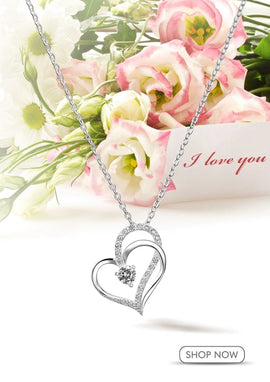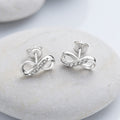It is always fun to buy and wear jewelry, but it’s not as fun when you find out your jewelry has given you an allergic reaction (such as itchiness, swelling, and blisters). Jewelry allergy is unfortunately quite common for people with sensitive skin that reacts to jewelry made of lower quality metals (brass, copper, nickel).
It is difficult to pinpoint what is the exact cause of jewelry rashes, but most allergic reactions are triggered by the presence of nickel content found within the jewelry piece. Nickel alloy is commonly used in making fashion jewelry and may undergo gold or rhodium plating.
If you’re looking for ways to still keep wearing your favorite accessories without throwing them away, here are a few tips on how you can prevent jewelry rash from happening.
Keep Your Jewelry Dry
First things first, make sure that your jewelry is nice and dry to prevent the rash from spreading out. There are many cases where jewelry and accessories may cause itchiness to the skin once the skin is not completely dry. When you expose the jewelry to moisture, bacteria will settle and odor will emerge, which causes skin itchiness. To prevent any rashes from spreading, you should wipe any excess water from your skin. If you are involved in physical activities (like exercising), be sure to remove your jewelry pieces so that the sweat and jewelry metal won’t negatively react against one another.

Use Nail Polish as Barrier
While this is not exactly the best long term option, applying a coat of nail polish over your jewelry metal can help prevent nickel allergy from occurring. A coat of nail polish not only serves as a barrier to reduce the chances of jewelry rash, but they can also prevent your accessory from tarnishing.
The only downside is that nail polish coating can have unexpected reactions if it comes into contact with certain gemstones and may affect your skin. Nail polish only serves as a temporary solution and therefore needs to be reapplied every now and then to be effective. This is not the most failsafe solution for people with higher sensitivity to jewelry and accessories made of cheaper metals.
Wear Hypoallergenic Jewelry
One of the main reasons why jewelry rash happens comes from wearing cheap jewelry. While costume and fashion jewelry may be more affordable than fine jewelry, they tend to contain a high amount of nickel content and are prone to causing irritation if you wear them on a frequent basis. Fashion jewelry often features a thin coating of metal (such as silver or rose gold plating) that prevents the nickel content from irritating the skin, but the metal coating will wear off over time.
Therefore, you should choose hypoallergenic and nickel free jewelry to prevent any rashes from acting up. While hypoallergenic jewelry is more expensive, they are a worthwhile investment that look beautiful and will prevent any allergy reaction from happening in the long run. There are a few types of nickel free jewelry metals you can consider, such as sterling silver, stainless steel and even 14k gold. You can learn more about the different types of hypoallergenic metals here.
Clean Jewelry Regularly
Another way you can prevent jewelry allergies from happening is by cleaning them regularly. However, if you are wearing quality jewelry and still have mild skin irritation, then it is possible that your jewelry has come into contact with an irritant that causes the skin rashes and has tarnished. The simplest and most efficient thing you can do is to make sure your jewelry is properly cleaned to remove the tarnish. Once your jewelry has been cleaned, you will notice your skin’s changed reaction to wearing the accessory.
For more tips on how to clean jewelry, read our jewelry care guides here: -
Consider Rhodium Plated Jewelry
Choosing and wearing fine jewelry is an excellent way to prevent jewelry allergies from happening, but if you want them to be more tarnish-free and hypoallergenic, you could consider electroplating them with gold or rhodium instead. Rhodium is a naturally hypoallergenic material, therefore making it a safe choice for those with sensitive skin. Coating a layer of rhodium over your jewelry will create a barrier between the metal and your skin.
Rhodium plating is another solution if you prefer wearing silvery white colored jewelry. Rhodium strongly resembles silver, and these cool-toned jewelry will shine beautifully for a long time. You can read more about why rhodium plating is better than gold plating here: -
Jewelry allergies are unpleasant and never fun. Not only do they cause itchy rashes, they can also cost us to give up our accessories. Whether it’s a quick nail polish coating or a rhodium plating fix, we hope that this blog has delivered you some much-needed solutions on how to prevent the allergic reactions and keep your skin safe for wearing jewelry.





























